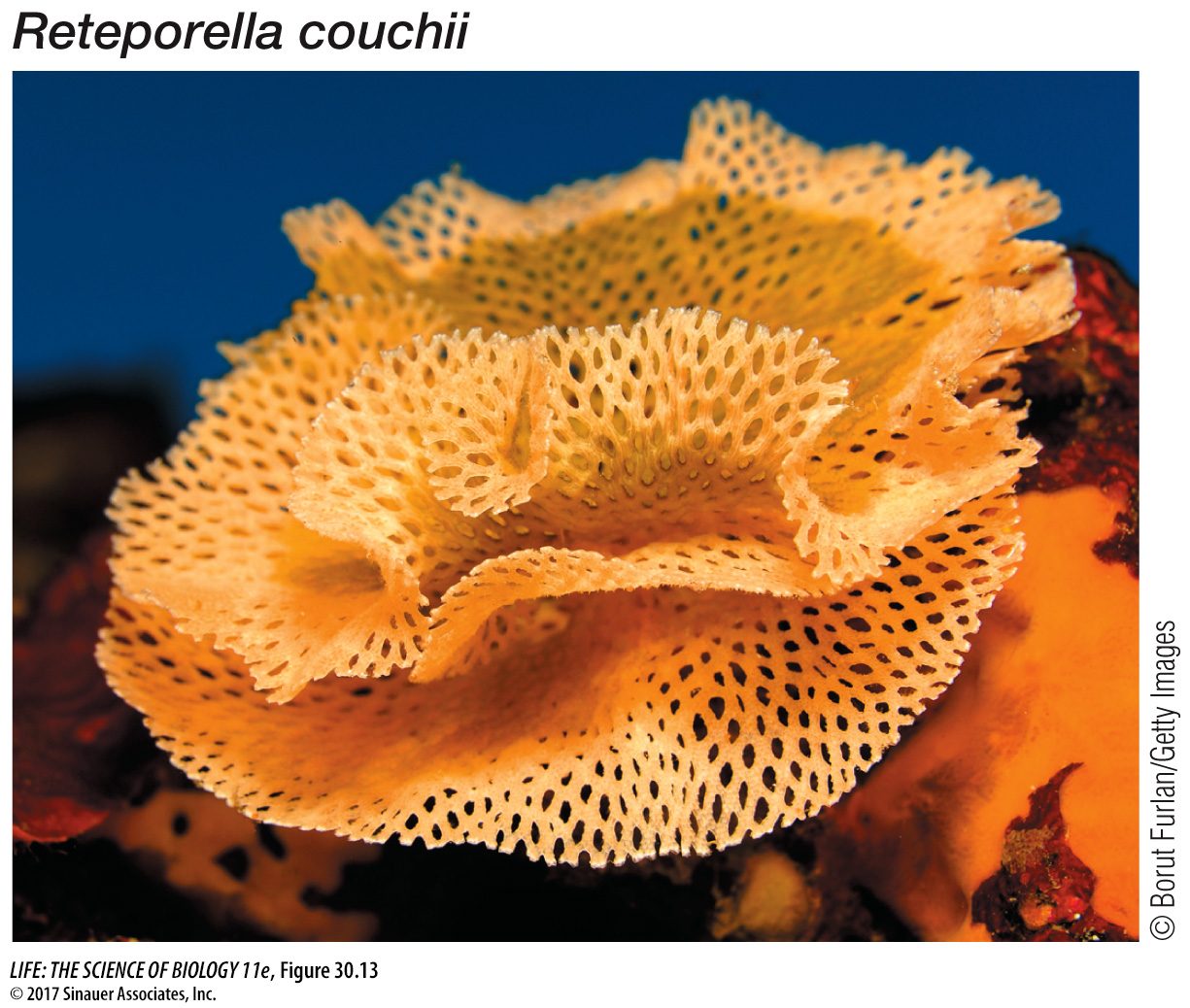Some animals form colonies of genetically identical, physiologically integrated individuals
Most people tend to view the distinction between individuals and populations as clear-cut. In several groups of animals, however, asexual reproduction without fission leads to the formation of colonies composed of many physiologically integrated individuals. At first appearance, these colonies may look much like a single integrated organism. The individuals in the colony are clonal copies of one another, so they are genetically homogeneous.
Coloniality has arisen several times among animal groups, with widely varying levels of integration and specialization among the individuals. In some species, colonies are composed of loosely connected but integrated individuals that all function alike (Figure 30.13). In other colonial species, the individuals may become specialized for different functions, just as different cell types in multicellular organisms do. The Portuguese man-of-war (a cnidarian; see Figure 30.20) is an example of such a colonial animal, as it is composed of many individuals of four different specialized body forms, all integrated and functioning together. The individuals in the colony are themselves multicellular, however, unlike the cells of a single multicellular organism.

Figure 30.13 Colonial Animals This bryozoan colony consists of many asexually reproducing, genetically homogeneous, physiologically interacting individuals. The colony looks much like a single individual with many parts, but in fact is a group of individuals acting together.
